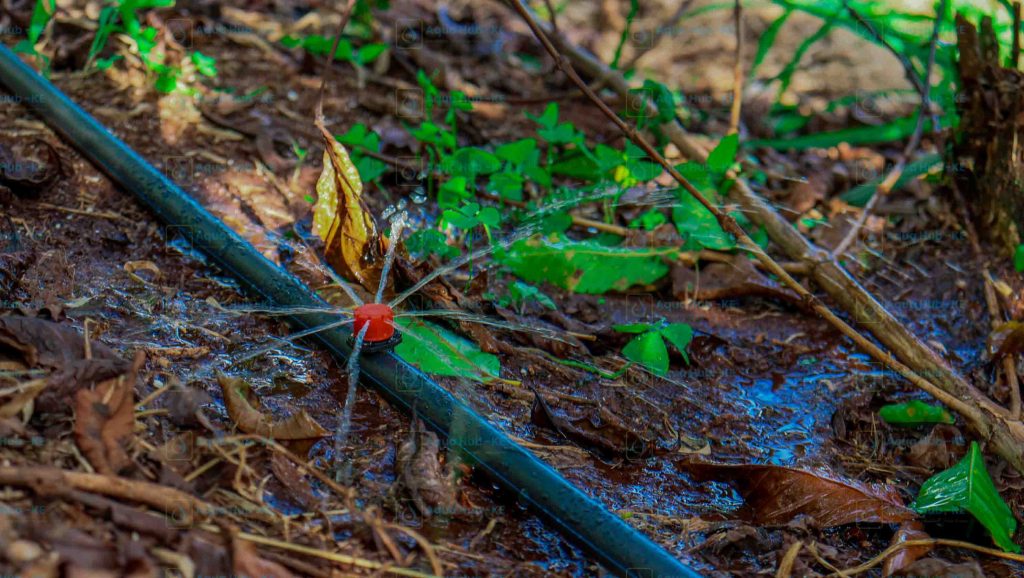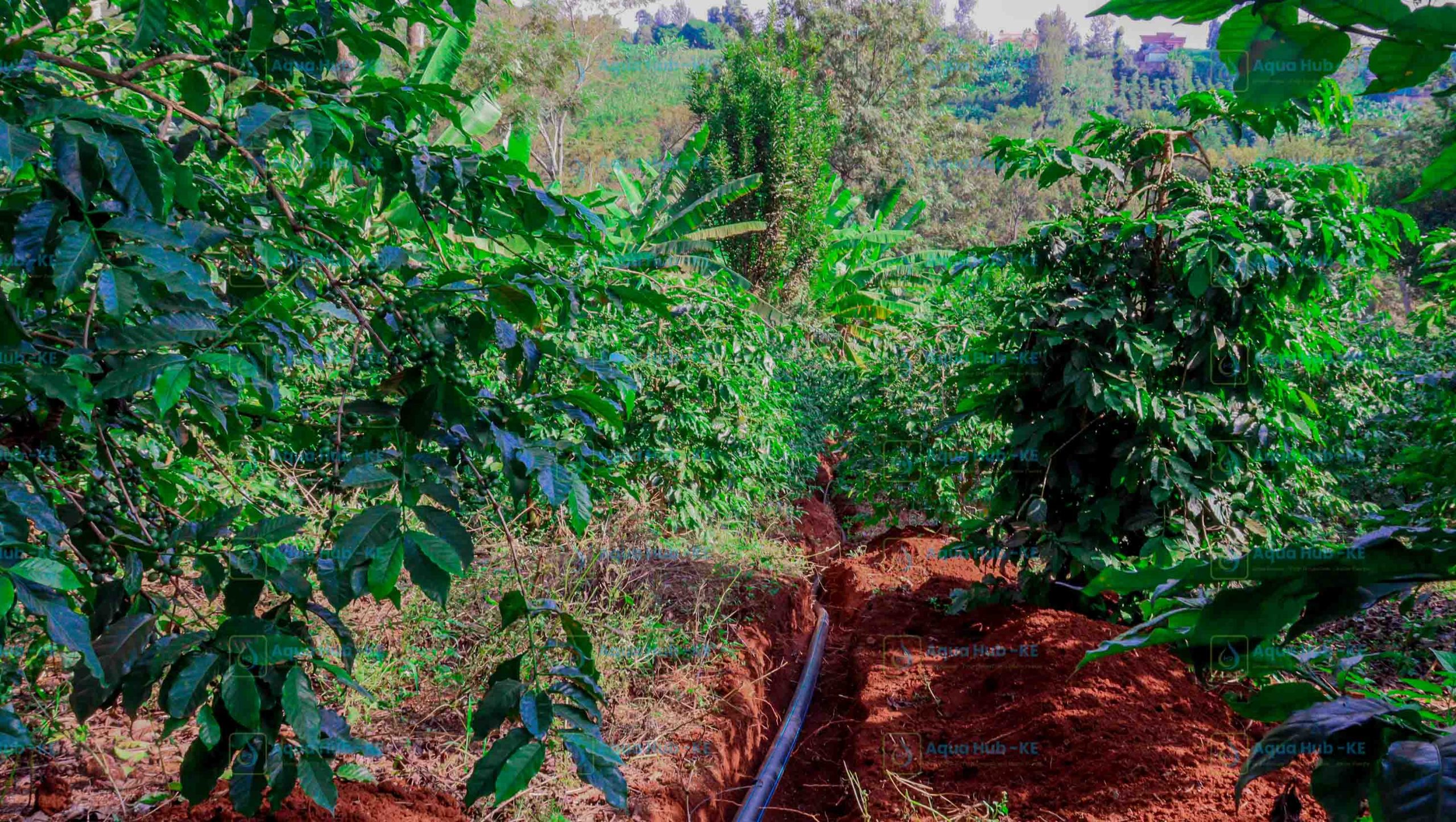In Kenya, coffee isn’t just a cash crop but a lifeline for thousands of smallholder farmers. However, weather patterns are becoming unreliable, leading to crop stress, lower yields, and reduced bean quality. Coffee Irrigation farming in Kenya is emerging as a game-changing solution.
By strategically supplying water to coffee plants during key stages of growth, farmers improve the yield.
This post discusses how coffee farmers in Kenya are using irrigation to improve quality, year round production and climate resilience.
Why Coffee Irrigation Is Essential in Kenya
Climate Change and Rainfall Uncertainty
Over the last 10 years, Kenya has experienced increasingly unreliable rainfall patterns. Many regions now face delayed rainy seasons, unexpected dry spells, and below-average precipitation. These conditions disrupt coffee flowering and bean development.
Irrigation bridges the gap when rains fail, ensuring that coffee plants continue growing, flowering, and producing quality cherries.
Consistent Production
Coffee prices on the global market are already volatile. When yields drop due to drought or erratic rainfall, smallholder incomes shrink even further. With irrigation, farmers can produce more consistently, access higher-paying markets, and reduce their dependence on luck.
Improving Bean Quality
Well-irrigated coffee plants are less stressed, leading to larger, more uniform beans, which fetch premium prices especially in Kenya, where AA and AB-grade coffee dominate export earnings.
Water Requirements for Coffee in Kenya
Arabica coffee, the most commonly grown variety in Kenya, thrives best with:
- Rainfall: 1200–1800 mm per year.
- Dry spell: Needed to trigger flowering.
- Moisture: Essential during berry development and maturation stages.
With declining rainfall in traditional coffee belts like Kiambu, Embu, and Nyeri, supplemental irrigation is becoming a necessity, not a luxury.
Best Irrigation Methods for Kenyan Coffee Farms
Button Drip Irrigation (Button Drippers)

Button Drippers is a known for its precise and high flow rate water supply. The method delivers water directly to the root zone using plastic tubing and emitters.
Advantages of Button Drippers
- Saves 30% of water compared to sprinkler systems.
- Works well even on hilly terrains
- Reduces weed growth and waterborne diseases.
Cost of Button Drip for Coffee Irrigation in Kenya
The cost of Button Drippers is KES 13 per piece. Button drip Irrigation System for coffee farming in Kenya may range from KES 85,000 to KES 130,000 per Acre.
Solar-Powered Irrigation Kits for Coffee Farming
Solar-powered drip kits are popular in rural areas where water for irrigation is sourced from rivers or wells. Due to electricity unavailability, and cost of fuel, solar pumps are used to pump water for irrigation.
The pump supplies water to the tank raised on a tower, where it is connected to button drip irrigation system on the coffee farm.
Benefits of Solar-powered Coffee Irrigation Kits
- Zero fuel cost.
- Ideal for boreholes or river water.
- Environmental sustainability.
Cost of Solar-powered Irrigation Kits in Kenya
The cost of Solar Irrigation Kits in Kenya is around KES 150,000 to KES 450,000 per acre. Price depends on the specifications and size of the farm.
Furrow Irrigation
This method involves manually directing water to coffee plants through small trenches or basins around trees.
Disadvantages of Furrow Irrigation on Coffee Farming
- Less efficient.
- Can lead to water wastage.
- Risk of soil erosion in sloped areas.
When to Irrigate Coffee in Kenya
Kenya’s two coffee seasons October to February) and April to June.
Irrigation is best done in the morning or evening to prevent evaporation.
Recommended irrigation schedule
- Before flowering: Apply sufficient water to induce uniform flowering.
- Berry development: Maintain consistent moisture to prevent bean shrinkage.
- Ripening: Light irrigation to support even maturation, especially during dry spells.
Avoid overwatering during the dry spell that triggers flowering. This is a common mistake that disrupts the plant’s natural cycle.
How to Make Coffee Irrigation Sustainable
1. Rainwater Harvesting
Many Kenyan farms now install plastic water tanks, ponds, or underground tanks to store rainwater. This reduces dependency on rivers or boreholes, especially in semi-arid areas like Makueni.
2. Soil Moisture Monitoring
Always check the moisture level of the soil by use of moisture sensors or manual observation.
3. Mulching
Apply organic mulch (coffee husks, banana leaves, grass) around the base of coffee trees. This improves soil moisture retention and suppresses weeds.
Integrating Grevillea, Macadamia, or Avocado trees also provides shade, improves biodiversity, and reduces evaporation.
4. Water Sourcing from Rivers
In parts of farmers are organizing into water user associations to manage shared river and spring water fairly and sustainably.
Challenges Facing Coffee Irrigation in Kenya
Despite the clear benefits, several barriers still exist:
- Cost of Installation: Drip systems are capital intensive and may not be affordable to all farmers.
- Water Access: In dry zones or areas with degraded catchments, water sources may be limited.
- Knowledge Gap: Many farmers lack training in irrigation design, scheduling, and maintenance.
- Policy and Infrastructure: Limited rural infrastructure and weak water regulations make scaling up harder.
Aqua Hub Kenya is determined to help smallholder coffee farmers to grow quality and harvest quality coffee. Our irrigation systems are affordable and is inclusive for both small and large-scale farmers. Through our research and insights, we ensure farmers get the right information on how to sustainably grow coffee through irrigation.
Are you Looking to Start Coffee Irrigation Farming?
Aqua Hub Kenya is a popular irrigation system supplier for high value crops including coffee, tea among others.
- Need help choosing the best irrigation system?
- Looking for training on coffee irrigation, management and post-harvest drying?
- Want to learn how to increase coffee yields sustainably?
Call 0790719020




